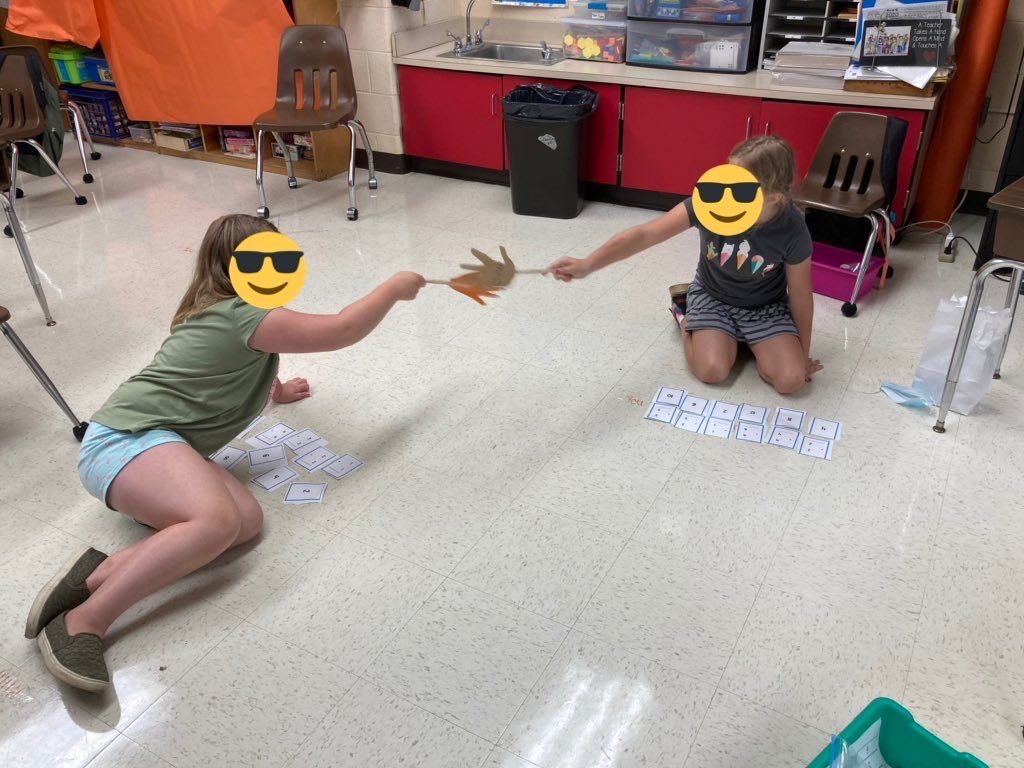
People are popping up all over with great examples of what a self-contained classroom can look like during the global pandemic. Michelle Clark from Powhatan, Virginia, ran a summer school program and created a number of creative ways for students to connect while staying socially distanced. From cardboard cutout high fives to playing telephone with tin cans, Michelle gets five gold starts for innovation!
With the great examples I also have been seeing a number of challenging questions. Let’s attempt to answer some of the big ones. Remember, most of us have not done this before, it is totally normal to feel uneasy. It’s like your first year of teaching all over again, except your student teaching did not prepare you for this. We can still rely on our minds and on each other, so let’s get talking.
I have young students who do not know how to stay six feet away from others. What do I do? In the previous posts I shared a number of examples on how to set up work spaces that were clearly defined for each student. Realistically, this is not going to be enough for every student. Some students will not be able to stay out of other’s space, it is a skill they are still developing. For young children in childcare programs who have similar challenges, the CDC recommends that at minimum you restrict the mixing of people. Given your classroom dynamics, this may be the best that you can do. This would look like dividing your class with furniture and partitions into two or three groups, having at least one adult with each group. This would at least minimize the contact between students. All other measures would still need to be in play. That includes temperature screenings, frequent hand washing, and attempting to give kids their own space whenever possible. For other tips on creating the COVID-19 Pre-K classroom, be sure to check out the Autism Helper.
What do I do when multiple students need a break space? If you are talking about the students referenced in the first question, you will need a break space for each group. If you are trying to keep everyone six feet apart with no sharing of anything, you will need a different break space for each student. You may need to get creative with this one. Some students are able to take a break at their desk if they have the right fidget and their work is removed. Other students may benefit from going for a walk while others might need time away from other people.
What if I have too many students and not enough space for social distancing in my classroom? As I stated in my last post, you may need to get rid of all nonessential furniture. Also know you will most likely not see all of your students. At least a few of your families will likely be reluctant to send their students back for in-person instruction. Also know that you will likely have many student absences. If a student is exhibiting just one of the signs of COVID-19 (a cough, sore throat, headache, runny nose, etc.), they must stay home. While not ideal for student learning, it will likely have an impact on how many students you have at one time.
What am I supposed to do when a student has an escalation? Everything that you would normally do to de-escalate a student, just with a few more precautions. We all know the best way to deal with behavior is to prevent it before it ever happens, but let’s be prepared for an escalation just in case. Luckily, most of our best practices in de-escalation can be done while still being six feet away. You will want to be quick to remove the other students from the room to minimize any student to student contact. Remember that de-escalation is not about taking control of a student, it is about helping the student regain control. You will want to maximize the manipulation of environmental variables that might support the de-escalation. This might include dimming the lights, pulling down the shades, turning on calming music, or turning a fan on. With less furniture in the room, it will be easier to move around and maintain social distancing while you use your de-esclation strategies. If the student does end up making contact with you, when all is calm again be sure to wash up and consider a change of clothes.
This all sounds great, but I still don’t feel safe. What else can I do?
Colllaborate with your colleagues, see how others might help you in sharing the load, and keep an open line of communication with your administrator. Our students bring additional layers that we need to plan for. With all of the emotions that this pandemic brings, we can’t lose sight of what we can accomplish when we get creative and lean on eachother for help. Keep on sharing out what is working for you and keep an eye out for what is working for others.





